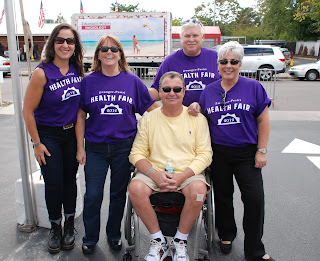A recent article in DiagnosticImaging asked the question "should patients have access to images and reports?" The answer, according to Zwanger-Pesiri Radiology's CEO and Medical Director, Steven L. Mendelsohn, MD, is a resounding "yes!"
Zwanger-Pesiri Radiology was an early adopter of the patient portal idea. ZPR's portal, launched almost two years ago, allows patients to access their exam results via their own computer. Patients can now view and print their reports. But patient portals have been met with some concern by doctors who worry that patients will get results online rather than from their referring physician. Mendelsohn, quoted in DiagnosticImaging, laid those fears to rest. "It's such an overwhelming benefit to give patients the results. I cannot think of a practical downside, whether the results are good or bad," he said. Plus, he added that an extra set of eyes is always a good thing. "The patients may pick up on stuff in their report that the referring doctor didn't notice," said Mendelsohn.
According to Mendelsohn, some referring physicians have even called to thank him for providing the reports online to patients. It ensures that patients get their results without delay, and speeds the whole process. Best of all, it gives patients a feeling of control, and the ability to be involved in their own health care.
Patients have greeted the portal with great enthusiasm. "Thank you for instituting the use of the patient portal," wrote one patient. "It is so wonderful to be able to access a record of all procedures and reports, appointments, etc. So much better than asking doctors for copies or to fax results. Having this kind of record at our fingertips is invaluable on so many levels. I will be sure to have all procedures done at Zwanger-Pesiri in the future."
Have you tried Zwanger-Pesiri's patient portal yet?
Zwanger-Periri Radiology is the leading Long Island provider of diagnostic imaging, with 12 offices throughout Nassau and Suffolk counties.
it’s
such an overwhelming benefit to give patients the results. I cannot
think of a practical downside, whether the results are good or bad, -
See more at:
http://www.diagnosticimaging.com/pacs-and-informatics/patient-portals-should-patients-have-access-images-reports?GUID=D19C12D8-83B1-4869-969F-926B0ADB9D75&rememberme=1&ts=15112013#sthash.jmseAhuq.4PQSCKgQ.dpuf
it’s
such an overwhelming benefit to give patients the results. I cannot
think of a practical downside, whether the results are good or bad, -
See more at:
http://www.diagnosticimaging.com/pacs-and-informatics/patient-portals-should-patients-have-access-images-reports?GUID=D19C12D8-83B1-4869-969F-926B0ADB9D75&rememberme=1&ts=15112013#sthash.jmseAhuq.4PQSCKgQ.dpuf he said.
“If
I estimate one to two calls per week per radiologist, I may be
overestimating it, - See more at:
http://www.diagnosticimaging.com/pacs-and-informatics/patient-portals-should-patients-have-access-images-reports?GUID=D19C12D8-83B1-4869-969F-926B0ADB9D75&rememberme=1&ts=15112013#sthash.jmseAhuq.4PQSCKgQ.dpuf











